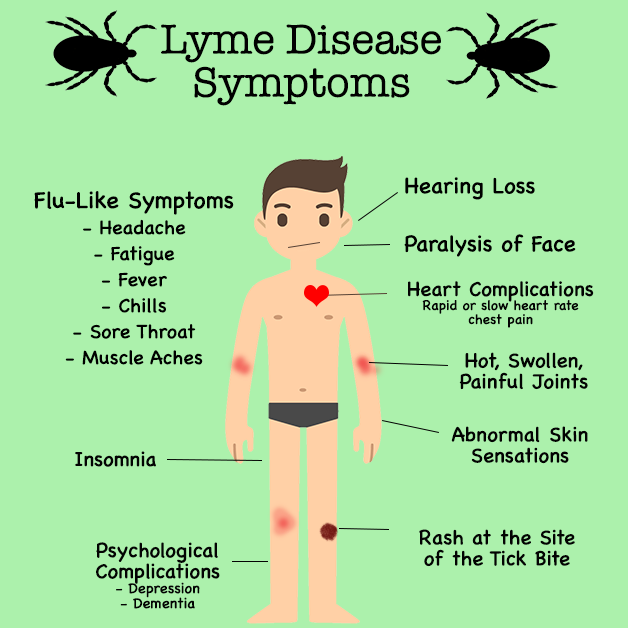Comprehensive Guide to Tick Bite Rash Treatment: How to Effectively Manage Lyme Disease Symptoms
What is Lyme disease? How can you diagnose and treat it effectively? Discover the symptoms, causes, and prevention methods for this tick-borne illness.
Understanding Lyme Disease: Causes and Symptoms
Lyme disease is a bacterial infection caused by the bite of an infected tick, typically the black-legged or deer tick. It was first identified in 1975 in the town of Lyme, Connecticut, where researchers discovered that tick bites were the underlying cause of a significant number of juvenile rheumatoid arthritis cases.
The disease is primarily found in certain regions of the United States, including the Northeast, mid-Atlantic, North central states, and the West Coast. However, cases have been reported in almost every state, and the disease is also present in Europe, Asia, and Australia.
The early symptoms of Lyme disease can appear within 3 to 30 days after a tick bite and may include fever, chills, headache, fatigue, joint and muscle aches, and a distinctive rash. The rash, often described as a “bull’s-eye” or target appearance, starts at the site of the tick bite and gradually expands over a few days.

If left untreated, Lyme disease can spread to other parts of the body, leading to more severe symptoms such as headaches, neck stiffness, arthritis, additional rashes, facial palsy, irregular heartbeat, numbness, and changes in mood or sleep habits.
Diagnosing Lyme Disease: Challenges and Considerations
Diagnosing Lyme disease can be challenging, as the ticks that carry the bacteria are small and the bite often goes unnoticed. Additionally, many of the symptoms are common to other illnesses, making it difficult to distinguish Lyme disease from other conditions.
If you find a tick on your skin, it’s important to remove it immediately using tweezers and then monitor for any symptoms in the following days. If you develop a rash or other symptoms, contact your healthcare provider. They may order a blood test, but these tests are not always reliable, especially in the early stages of the disease.
In cases where joint swelling or neurological issues are present, your doctor may need to perform additional tests, such as taking fluid from the affected joint or spine, to help confirm the diagnosis.
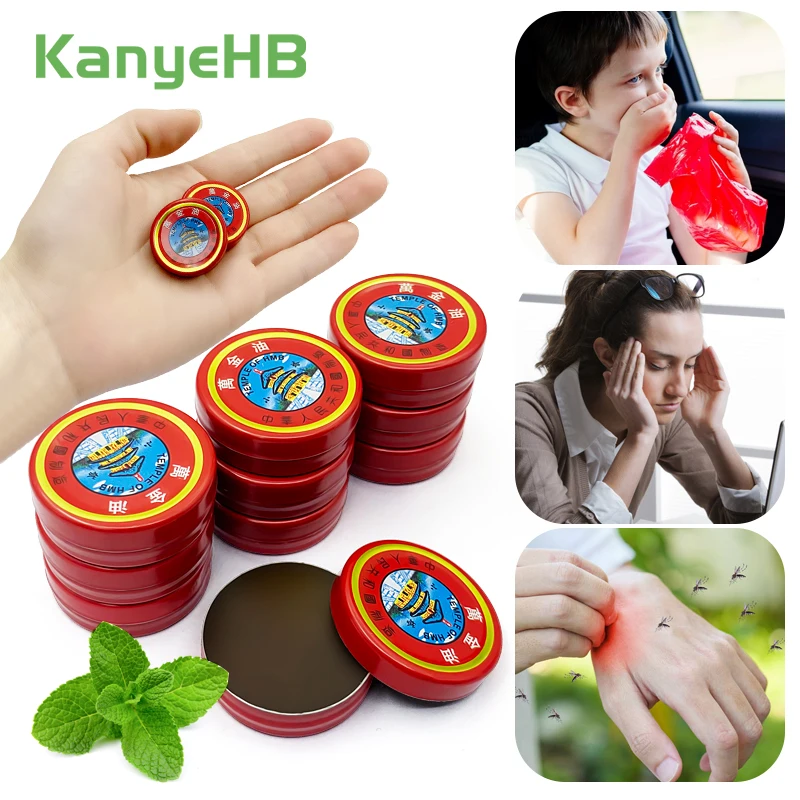
Preventing Lyme Disease: Effective Strategies
The best way to prevent Lyme disease is to avoid being bitten by ticks in the first place. When spending time outdoors in areas where ticks are known to live, such as wooded or grassy areas, it’s important to take the following precautions:
- Avoid walking in the center of trails and stay in the middle of paths.
- Use an insect repellent containing at least 20% DEET on your clothing and exposed skin (avoid applying to the face and hands of children).
- Treat your clothing, tents, and other gear with repellents containing 0.5% permethrin.
- Wear light-colored clothing to make it easier to spot and remove any ticks.
- Wear long-sleeved shirts and long pants, tucking your pant legs into your socks or boots.
- Thoroughly check yourself, your children, and your pets for ticks after being outdoors.
- Bathe or shower as soon as possible to wash off any ticks that have not yet attached.
Treating Tick Bite Rash and Lyme Disease
If you are bitten by a tick, it’s normal to have a small bump or red spot at the bite site. This does not necessarily mean you have Lyme disease, and the redness usually goes away within a day or two.

However, if you develop a characteristic bull’s-eye rash or experience other Lyme disease symptoms, it’s important to seek medical attention. Your healthcare provider may prescribe antibiotics, such as doxycycline, amoxicillin, or cefuroxime, to treat the infection.
It’s crucial to start treatment as soon as possible, as early treatment is more effective in preventing the spread of the disease and the development of more severe complications.
Recognizing and Managing Late-Stage Lyme Disease Symptoms
If Lyme disease is left untreated, it can spread to other parts of the body and lead to more severe, late-stage symptoms. These may include:
- Headaches and neck stiffness
- Arthritis and joint pain
- Additional rashes
- Facial paralysis (Bell’s palsy)
- Irregular or slow heartbeat
- Numbness or tingling in the arms or legs
- Inflammation of the brain and spinal cord
- Changes in mood, sleep patterns, and short-term memory
- Nerve pain
If you experience any of these late-stage symptoms, it’s crucial to seek immediate medical attention. Your healthcare provider may need to perform additional tests, such as joint fluid analysis or spinal taps, to confirm the diagnosis and develop an appropriate treatment plan.
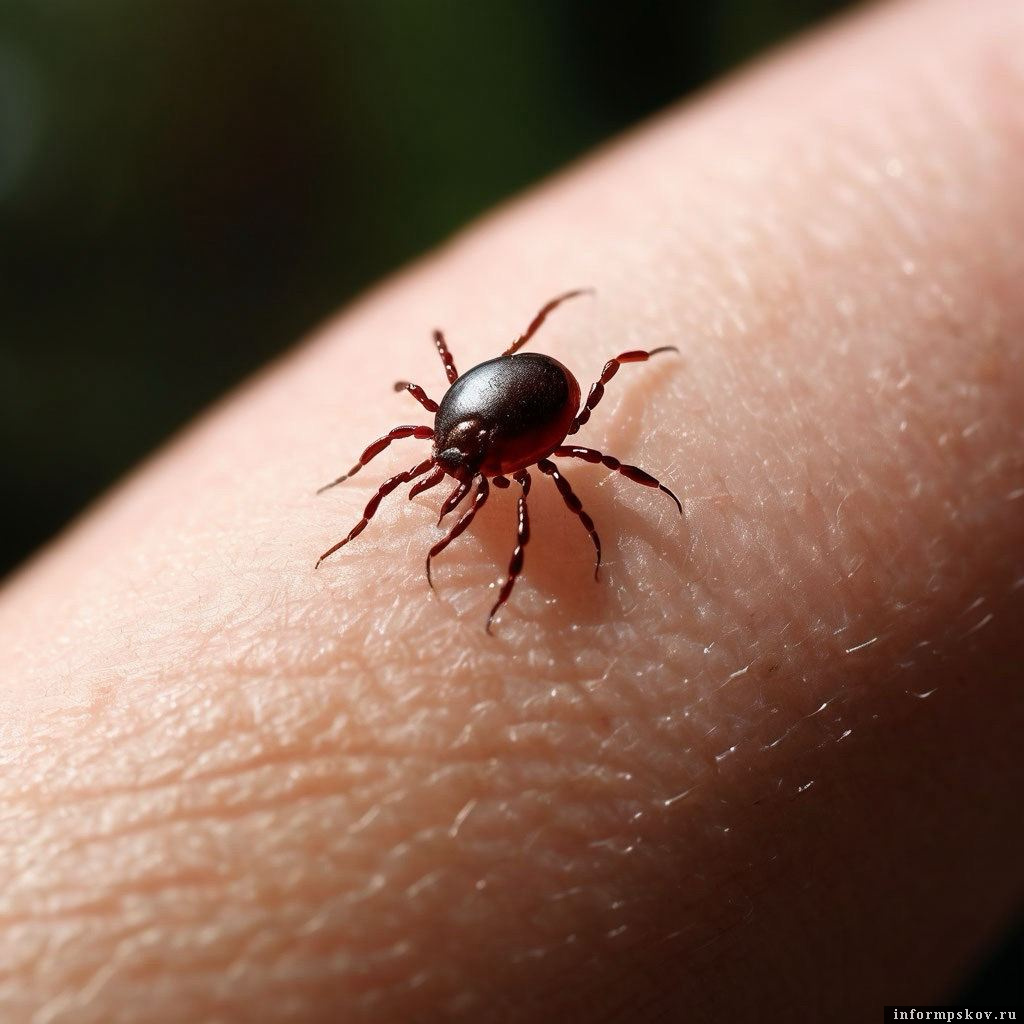
The Importance of Early Treatment and Ongoing Care
Prompt diagnosis and treatment of Lyme disease are essential to preventing the spread of the infection and the development of more severe complications. If caught early, Lyme disease can often be effectively treated with antibiotics.
However, some individuals may experience persistent symptoms, a condition known as post-treatment Lyme disease syndrome (PTLDS). In these cases, ongoing care and management under the guidance of a healthcare provider are crucial to address the lingering effects of the disease.
By understanding the causes, symptoms, and prevention strategies for Lyme disease, individuals can take proactive steps to protect themselves and seek timely medical attention if they suspect they have been exposed to or infected by the disease. Early intervention and proper treatment are key to ensuring a positive long-term outcome.
Lyme Disease – Symptoms, Diagnosis, Treatment
What is Lyme disease?
Lyme disease is a bacterial infection that is caused by a tick bite. It was first recognized in 1975 when large numbers of children around the town of Lyme, Connecticut, were being diagnosed with juvenile rheumatoid arthritis. Researchers investigated and found that tick bites were causing the illnesses.
Lyme disease is carried by black-legged ticks (sometimes called deer ticks). These ticks are typically about the size of a sesame seed. They live mostly in certain areas of the country:
- Northeast and mid-Atlantic (northeast Virginia to Maine)
- North central states (mostly Wisconsin and Minnesota)
- West Coast (mostly northern California)
However, Lyme disease can be found in other parts of the United States. While you are more likely to get it in the above regions, cases of Lyme disease were reported in almost every state in 2017. The disease is also found in Europe, Asia, and Australia.
What are the symptoms of Lyme disease?
Early symptoms (3 to 30 days after a tick bite):
- Fever
- Chills
- Headache
- Fatigue
- Joint and muscle aches
- Rash
- Swollen lymph nodes
The rash is a telltale sign of Lyme disease. It usually starts at the site of the tick bite. It expands gradually over a few days. It can reach up to 12 inches across or more. The center may fade, creating a “bull’s eye” or target appearance. The rash may feel warm to the touch.
Some people with Lyme disease do not get the bull’s-eye rash. They may have many red spots instead. Others don’t get a rash at all. Around 75% of people with Lyme disease get a rash.
Later symptoms (days to months after a tick bite):
If Lyme disease isn’t treated, it can spread to other parts of the body. Late-stage symptoms include:
- Headaches
- Neck stiffness
- Arthritis (painful, swollen joints)
- Additional rashes
- Facial palsy (face muscles droop)
- Irregular or slow heartbeat
- Numbness in arms or legs
- Inflammation of the brain and spinal cord
- Changes in mood or sleep habits
- Short-term memory problems
- Nerve pain
It is normal to have a small bump or red spot where a tick bit you. This does not mean you have Lyme disease. It usually goes away in a day or two.
This does not mean you have Lyme disease. It usually goes away in a day or two.
What causes Lyme disease?
People get Lyme disease when they are bitten by an infected tick. Ticks live in areas with a lot of plant life, such as wooded areas or fields. They sit near the top of grassy plants and low bushes. They wait there for people or animals to brush up against them. Ticks can crawl on your clothes or body for up to several hours or more before attaching to the skin.
Ticks can attach to any part of your body. They are usually found in hard-to-see areas, including the armpits, groin, or scalp. An infected tick needs to be attached to your skin for 36 to 48 hours before it passes the bacteria on to you.
People who spend time in outdoor areas where ticks are common are at higher risk of getting tick-borne diseases.
How is Lyme disease diagnosed?
It can be difficult to diagnose Lyme disease. The ticks that carry it are very small and the bites don’t hurt.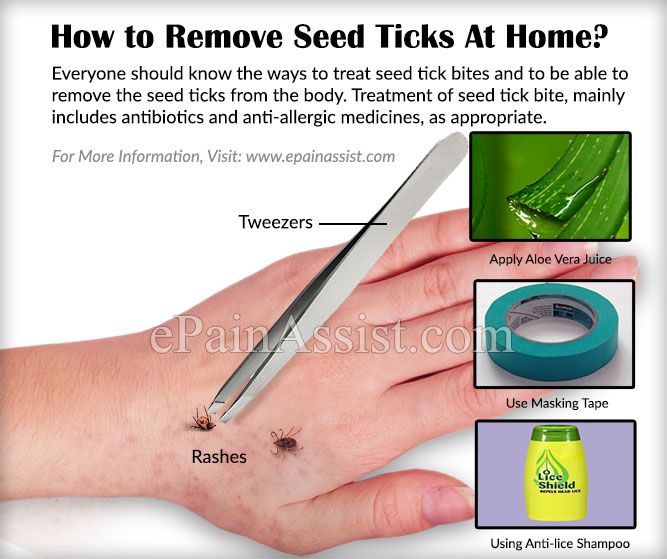 Many patients don’t remember being bitten. In addition, most of the symptoms are common with other illnesses.
Many patients don’t remember being bitten. In addition, most of the symptoms are common with other illnesses.
If you find a tick in your skin, use tweezers to remove it immediately. Then wait a few days to see if you develop any symptoms. If you do, call your family doctor. Your doctor will ask you about your symptoms. They will look at the bite and check for a rash. They may order a blood test. But those aren’t always necessary to make the diagnosis. They can often give false results, especially in early-stage Lyme disease.
People who have joint swelling or nervous system problems may need to have special tests. Your doctor may need to take some fluid from the swollen joint or the spine to check for clues to your condition.
If you have been sick for 4 weeks or more, call your doctor. They can give you a blood test at this stage. It will tell you if you have Lyme disease.
Can Lyme disease be prevented or avoided?
The best way to prevent Lyme disease is to avoid being bitten by ticks.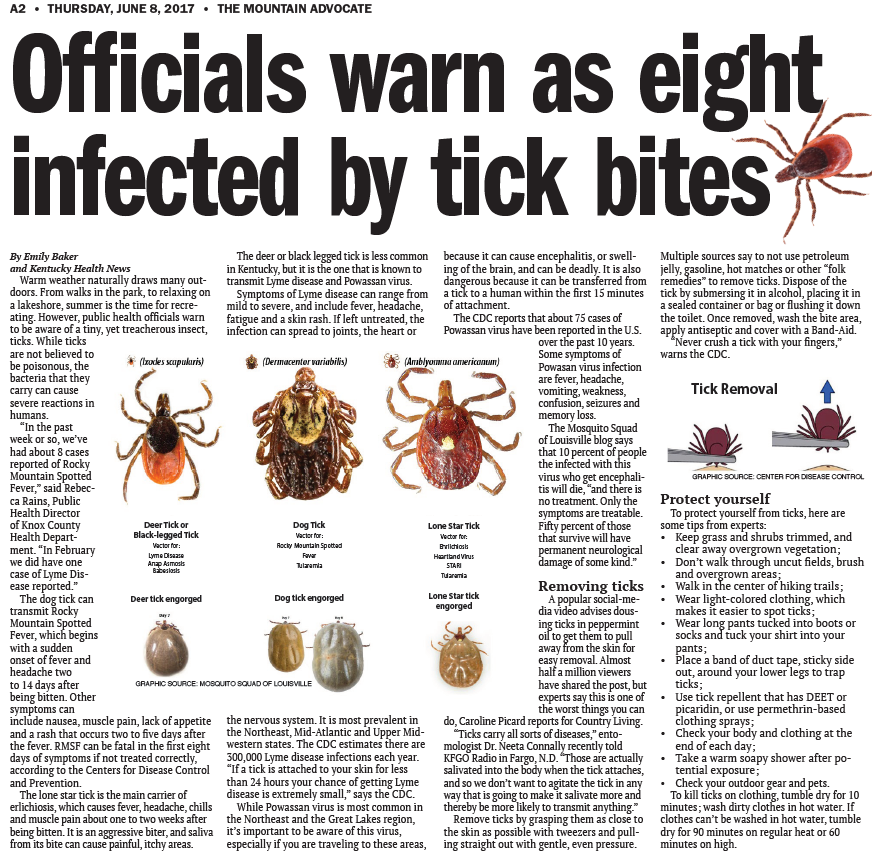 When you are outdoors, follow these guidelines:
When you are outdoors, follow these guidelines:
- Avoid areas that are wooded, brushy, or have tall grass.
- Walk in the center of trails.
- Use an insect repellent with at least 20% DEET. It can be put on clothing or sparingly on the skin. Don’t apply it to the face or hands of children.
- Treat clothing, tents, or other gear with repellents containing 0.5% permethrin.
- Wear light-colored clothing. This makes it easier to see and remove ticks from your clothes.
- Wear a long-sleeved shirt and long pants. Tuck your pant legs into your socks or boots for added protection.
After you get home, check everything and everyone for ticks.
- Bathe or shower as soon as you can to wash off any ticks that have not attached to you.
- Check your entire body for ticks. Use a mirror for places you can’t see. Check your children and your pets. Common tick locations include the back of the knees, groin area, underarms, ears, scalp, and the back of the neck.

- Check any gear you used, including coats, backpacks, or tents.
Tumble dry clothes or blankets on high heat in the dryer for 10 to 15 minutes. This should kill any ticks. If clothes are dirty, wash them in hot water and dry on high heat for 60 minutes.
Lyme disease treatment
What do I do if I find a tick on my skin?
Don’t panic. Use fine-tipped tweezers to grasp the tick as close to the skin’s surface as possible. Pull up with steady, even pressure. Be careful not to squeeze or twist the tick body. Sometimes parts of the tick remain in the skin. You can leave them alone or carefully remove them the same way you would a splinter. Do not use heat (such as a lit match), petroleum jelly, or other methods to try to make the tick “back out” on its own. These methods are not effective.
Wash the area where the tick was attached thoroughly with soap and water. Keep an eye on the area for a few weeks and note any changes. Call your doctor if you develop a rash around the area where the tick was attached. Be sure to tell your doctor that you were bitten by a tick and when it happened.
Be sure to tell your doctor that you were bitten by a tick and when it happened.
How is Lyme disease treated?
Lyme disease is treated with antibiotics. In most cases, people bitten by a tick are given antibiotics only if they are sick or have a rash. If you are bitten by a tick but don’t get sick or get a rash, you don’t need antibiotics.
Early-stage Lyme disease responds very well to treatment. In most cases, taking an antibiotic for 2 to 4 weeks kills the bacteria and clears up the infection. Your doctor will tell you how long to take the antibiotic. It’s important to take all the medicine your doctor prescribes. This will prevent the spread of Lyme disease to your joints, nervous system, or heart. If you have problems with the medicine, do not quit taking it. Call your doctor and talk to them about your side effects.
Late-stage Lyme disease is also treated with antibiotics. It may be necessary to give the antibiotics intravenously (through an IV) at this stage.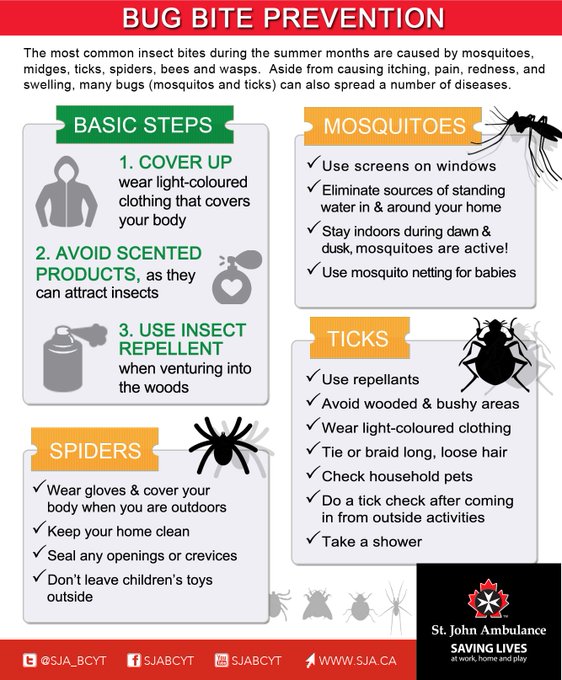 Medicine that reduces swelling and pain can ease arthritis associated with late-stage Lyme disease. If necessary, excess fluid can be drained from any affected joints.
Medicine that reduces swelling and pain can ease arthritis associated with late-stage Lyme disease. If necessary, excess fluid can be drained from any affected joints.
Living with Lyme disease
Most people treated in the early stages of Lyme disease make a quick and complete recovery. Some may experience symptoms for a few weeks after treatment. If you were treated for Lyme disease but you still don’t feel well, call your family doctor. They can make sure there isn’t something else wrong. They can help you find ways to ease your symptoms. Some patients have found relief with treatments typically used for chronic fatigue syndrome or fibromyalgia.
Other things you can do to help manage Lyme disease include:
- Educate yourself. There is a lot of inaccurate information to be sorted through, especially on the internet. Ask your doctor if you have questions.
- Track your symptoms. Keep a diary of your sleep patterns, eating habits, exercise routines, and how you’re feeling.
 You or your doctor may be able to make connections between them.
You or your doctor may be able to make connections between them. - Take care of yourself. Eat a healthy diet. Exercise as regularly as you can. Get plenty of rest.
- Find support.It can be hard to not feel well and not know why. Some people may think your symptoms aren’t real. Talk to friends and family. If they can’t offer support, talk with a counselor who can help you.
Questions to ask your doctor
- I found a tick embedded in my skin, but I can’t get it out. What should I do?
- I’ve been bitten by a tick. Do I need to be seen?
- Do I need a blood test to confirm Lyme disease?
- Which antibiotic is best for me?
- How long will I have to take the antibiotic?
- What tick or insect repellent should I use for me or my child?
- How long will the symptoms last?
- What should I do if I still don’t feel well a long time after I was bitten?
Resources
Centers for Disease Control and Prevention: Lyme Disease
National Institute of Allergy and Infectious Diseases: Lyme Disease
U. S. National Library of Medicine: Lyme Disease
S. National Library of Medicine: Lyme Disease
National Institutes of Health, MedlinePlus: Lyme Disease
Tick bites: Symptoms and treatment
Just thinking about ticks can make your skin crawl. But if you enjoy hiking, hunting, time at the cabin or other shady, damp environments, encounters with ticks can be part of the package.
We’d all prefer to avoid tick bites, but if you find yourself dealing with one, there’s no need to worry – they’re often harmless. We’ll explain how to identify tick bite symptoms, how to remove a tick at home and when you should see a doctor for treatment.
What is a tick exactly?
Ticks are tiny bugs that have eight legs and are related to spiders and mites. They feed off human and animal blood to survive. Ticks are often found in damp, cool, wooded areas during the spring through mid-summer, then again in the fall. But in some areas, they can be active during other seasons as well.
Types of ticks in Minnesota and the Upper Midwest
In Minnesota and the Upper Midwest, there are about a dozen different types of ticks.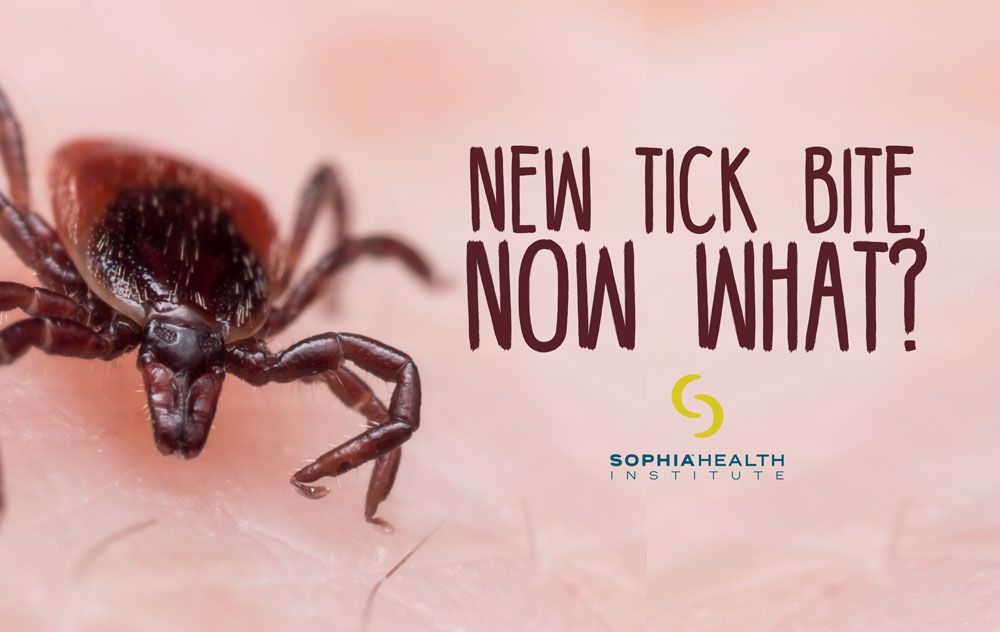 The three types of ticks that people come across most often are the blacklegged tick (deer tick), the American dog tick (wood tick), and the lone star tick.
The three types of ticks that people come across most often are the blacklegged tick (deer tick), the American dog tick (wood tick), and the lone star tick.
What does a tick look like?
Ticks can vary in appearance depending on the type of tick, its life stage and sex. Ticks can be grayish-white, brown, black, reddish-brown or yellowish in color. They can be as small as a grain of sand in the larvae stage to the size of a pencil eraser when fully grown.
When is tick season in Minnesota?
In Minnesota, ticks usually start to emerge after the snow melts, reaching peak activity during the month of May. They’re typically active throughout June.
As temperatures climb, tick activity declines until the fall, usually around the end of September through October. Tick season ends when temperatures drop below freezing or snow covers the ground.
Tick bite symptoms
Many people won’t experience any symptoms from a tick bite, but tick bites can cause:
- Small hard bumps or sores, redness or swelling
- Allergic reactions that can range from mild (local swelling and inflammation at the site of the bite) to severe (anaphylaxis)
- Flu-like symptoms, joint pain or a rash, which can also be symptoms of a tick-borne illness
What does a tick bite feel like?
Most likely, you won’t feel a tick bite because they don’t usually hurt.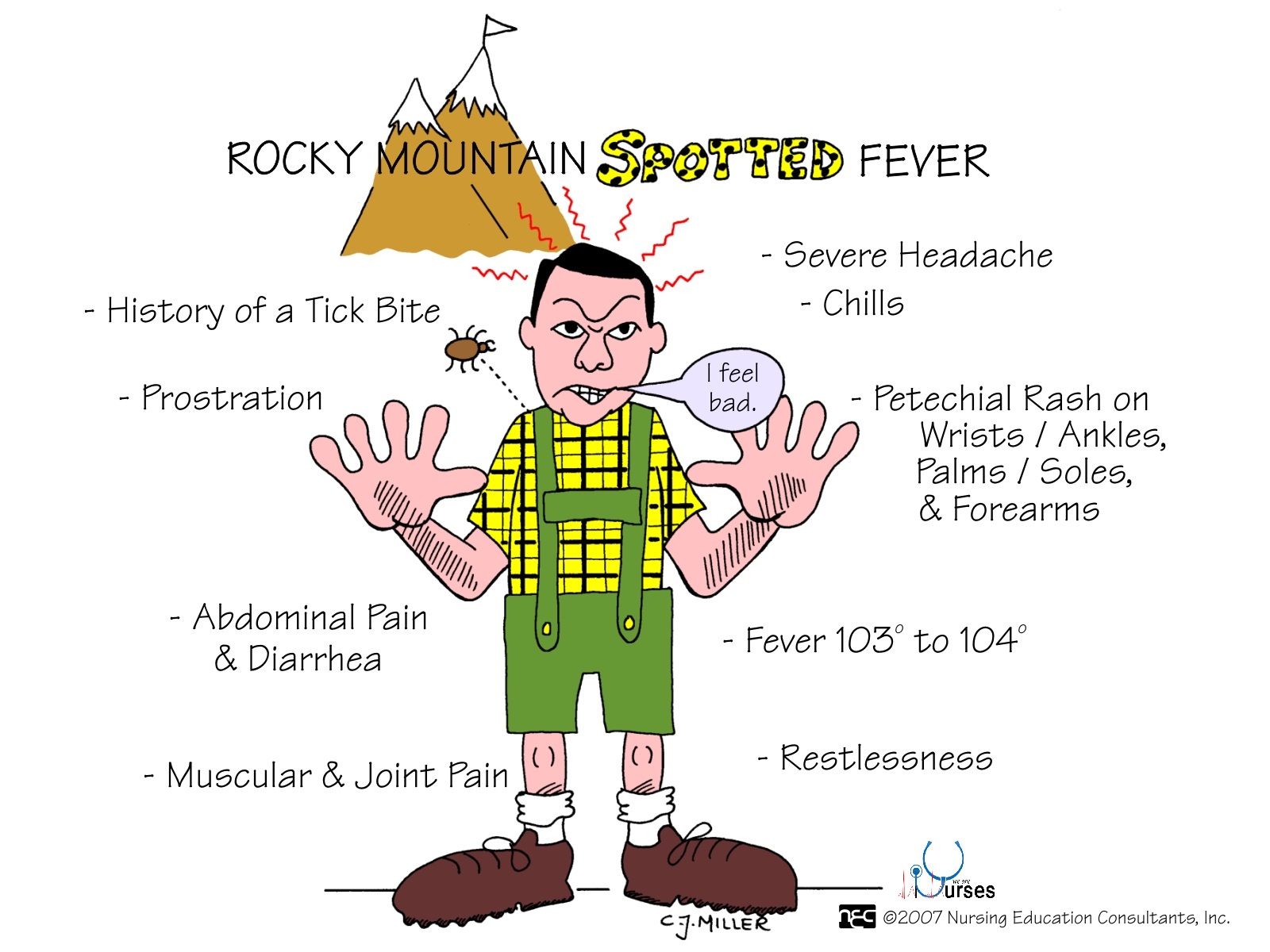 Ticks are often very small, so you might not see it until it’s been on you a few days and has grown larger. That’s why it’s important to check yourself when you’ve been in places where ticks live.
Ticks are often very small, so you might not see it until it’s been on you a few days and has grown larger. That’s why it’s important to check yourself when you’ve been in places where ticks live.
What does a tick bite look like?
A small bump may appear at the site of the tick bite. But if it develops into a rash, that may indicate illness. A rash usually appears 3-14 days after the tick bite but it can look different depending on the type of tick. Watch for small reddish or purplish spots, or expanded rashes that look like a bullseye.
Where to look for tick bites
If you or your children have been hiking, making mud pies or doing other activities in areas where ticks are common, it’s important to do a quick body check and run your fingers gently over your skin and hair. Ticks are often found behind the knees, between fingers and toes, and on underarms. It’s a good idea to check your belly button, neck, hairline, top of your head, and in and behind your ears, too.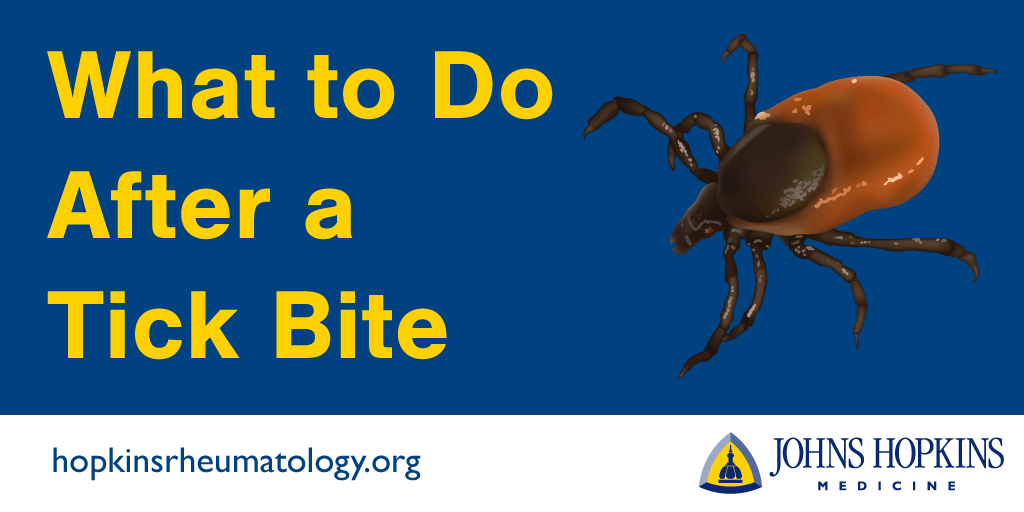
Symptoms of tick-borne diseases
If you’re having symptoms after a tick bite, it could be an indication that something more is going on. After you remove a tick, watch for symptoms of tick-borne illnesses which usually begin 3-30 days after the tick bite. They include:
- A red, expanding rash at the site of the tick bite or on other parts of the body.
- Flu-like symptoms, including fever, fatigue, headache, muscle and joint aches.
It’s important to see your doctor if you develop these symptoms. Even if you’ve had Lyme disease in the past, you can still contract the infection again and may need treatment for a second infection.
Tick diseases
While most ticks don’t carry disease, it’s important to be aware of common tick illnesses, including:
- Lyme disease is the most common tick illness in the United States. Typical symptoms include fever, headache, fatigue and a skin rash that resembles a bullseye.
- Rocky Mountain spotted fever is often transmitted by dog or wood ticks.
 Symptoms include fever, headache and a rash. If not treated early with the right antibiotic, this tick disease can be deadly.
Symptoms include fever, headache and a rash. If not treated early with the right antibiotic, this tick disease can be deadly. - Tularemia is a tick disease that can infect humans and animals. Symptoms can vary depending on how someone becomes infected. This illness can be life threatening if not treated early with antibiotics.
- Ehrlichiosis is spread by lone star ticks. Symptoms include fever, chills, headache, muscle aches and possibly an upset stomach.
- Babesiosis is caused by microscopic parasites that infect red blood cells and are spread by certain ticks. Many people who are infected don’t experience symptoms, but there are effective treatment options for those who do.
- Alpha-gal syndrome, a condition often caused by a lone star tick bite, is a type of food allergy to red meat and other products made from mammals.
How to remove a tick
The longer a tick is on your skin, the more likely you are to experience symptoms or contract a tick illness. If you find a tick embedded on yourself or a family member, remove it as soon as possible following these steps:
If you find a tick embedded on yourself or a family member, remove it as soon as possible following these steps:
- Do not paint the tick with nail polish or other substances before trying to remove it.
- Use tweezers to grasp the tick against the skin surface.
- Pull with a constant steady pressure until the tick is removed.
- Clean the skin with alcohol or soap and water after the tick is removed.
- Call your doctor or clinician after you remove the tick if you think it was embedded for more than 24 hours. They may want to prescribe a single dose of an antibiotic to help prevent infection.
- Keep the tick in a small plastic bag in case you need to show it to your doctor.
Tick bite treatment
Most tick bites don’t require a doctor’s visit. In fact, you can treat a lot of tick bites right at home. To relieve itching, redness, swelling and pain you can:
- Take an oatmeal bath
- Put ice or a cold pack on the bite for 15-20 minutes once an hour until the swelling and pain subside
- Try over-the-counter medicines
When to worry about a tick bite
Generally, tick bites are not a cause for concern, but you should reach out to a doctor if:
- You are unable to remove the tick completely
- A rash develops or you think the bite site is infected
- You develop flu-like symptoms, including fever, chills, fatigue, muscle and joint pain, or a headache
There are several options if you need care for a tick bite:
Call one of our care lines for advice
When HealthPartners patients or members need advice from a professional, we make it easy to talk to a nurse 24/7 about all sorts of health questions, including tick bite symptoms and treatment. Call 612-339-3663 or 800-551-0859 to speak with one of our knowledgeable nurses.
Call 612-339-3663 or 800-551-0859 to speak with one of our knowledgeable nurses.
Get treatment and care virtually
Make a video visit appointment to meet with your preferred primary care doctor or pediatrician. Or start a Virtuwell visit for 24/7 treatment without an appointment. Just answer a few questions, and you’ll get your diagnosis and treatment plan from a board-certified nurse practitioner for $59 or less, depending on your insurance.
Visit a clinic
If extra care or examination is needed, you can always make an appointment with your primary care doctor or your child’s pediatrician.
Doctors called the main symptoms of an infected tick bite | Society news | Izvestia
The appearance of a fever and a rash on the body during the epidemic season may indicate the bite of an infected tick, doctors told RIA Novosti on Wednesday, April 28.
“The incubation period for major tick-borne infections is about a month.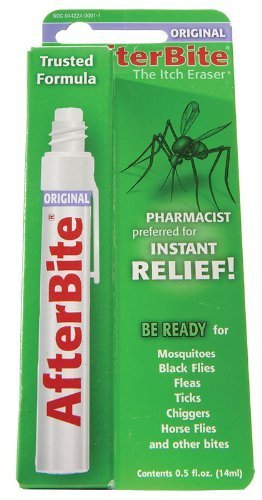 During this period, it is necessary to monitor the child. If the child has any complaints, such as fever, rash on the body, you should contact the pediatrician, indicating the fact of suction. It is worth remembering that if the fact of tick suction is not established, it cannot be guaranteed that it was not there. After a bite, the tick can fall off on its own, and the pathogen can enter the blood, ”said Alexei Rtishchev, an infectious disease specialist at the Morozov Children’s Hospital.
During this period, it is necessary to monitor the child. If the child has any complaints, such as fever, rash on the body, you should contact the pediatrician, indicating the fact of suction. It is worth remembering that if the fact of tick suction is not established, it cannot be guaranteed that it was not there. After a bite, the tick can fall off on its own, and the pathogen can enter the blood, ”said Alexei Rtishchev, an infectious disease specialist at the Morozov Children’s Hospital.
It is clarified that if during the epidemic season a child visited the forest or endemic areas and he developed symptoms of an infectious disease, including fever of any degree, ring-shaped rashes, you should immediately consult a doctor to prevent a possible infection.
In an adult, after being bitten by an infected tick, the temperature may rise and a rash may occur, said Natalya Prokhorova, head of the admissions department, infectious disease specialist at ICH No.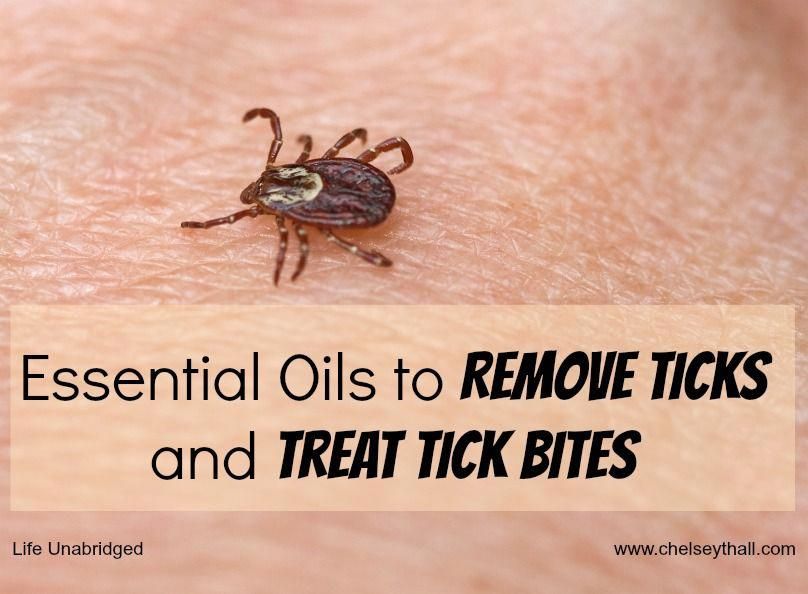 2.
2.
“Don’t panic if you get bitten by a tick. It is necessary to remove the tick as soon as possible. You can do this on your own or go to the emergency room at the place of residence, or to the office of tick-borne encephalitis immunoprophylaxis in IKB No. 2. After a bite, you need to take a tick for a test for tick-borne infections, if detected, you should consult with an infectious disease doctor, ”said Prokhorova.
The easiest way to remove a tick yourself is with a thread, Rtishchev added. On a hike and in the forest, you can pull it out of your clothes. The thread must be tied around the place where the tick stuck to the skin, and unscrewed clockwise. It is possible to reduce the likelihood of infection entering the bloodstream with the prompt removal of the insect.
“If the tick has been removed, it is recommended to promptly deliver it to the laboratory of Rospotrebnadzor or any other laboratory. Within one or two days, a study will be carried out for the presence of the causative agent of four infections – tick-borne borreliosis, tick-borne encephalitis, ehrlichiosis, and anaplasmosis. If pathogens are detected, emergency prophylaxis will be prescribed, ”Rtishchev concluded.
If pathogens are detected, emergency prophylaxis will be prescribed, ”Rtishchev concluded.
On April 23, it was reported that during the week in the Pskov region 37 people, including eight children, turned to doctors with tick bites. Compared to 2020, the number of applications decreased by 79%.
On April 17, the Russian Ministry of Emergency Situations spoke about effective ways to protect against ticks. When entering the forest, experts advise wearing special suits that protect against pests. In the absence of overalls, dress in such a way that a quick inspection can be easily carried out to detect ticks attached to the fabric. Trousers are recommended to be tucked into boots, and outerwear – into trousers.
Tick bite: what to do? (Sergiev Posad)
What should I do if bitten by a tick?
ATTENTION: Online consultations of doctors are available (more than 18 specialties).
A tick bite is an unpleasant situation that can lead to significant health consequences in the form of deadly complications.
The activity of parasites in nature increases in the warm season, and they can imperceptibly harm a person. Arthropods live mainly on trees, but they can also be on bushes and in the grass – they are able to adapt to different conditions.
Between the bite and the first symptoms of a lesion, a sufficiently long period of time usually passes, and the pathogens of neuroinfections have time to penetrate into the bloodstream, causing a number of irreversible changes.
The likelihood of interaction with these blood-sucking parasites makes people panic, but you should not worry without a reason – a tick bite does not mean an obligatory infection. It is important to know the precautions, as well as the diagnostic algorithm for recognizing a bite, and the immediate procedure for detecting a parasite. Early detection of the tick and timely initiation of treatment determine the success of therapeutic measures, while diagnosis in the later stages leads to difficulty in choosing a treatment, irreversible dysfunction of the central nervous system, or transition to a chronic form. It is also necessary to evaluate the benefits of vaccination and determine the feasibility of its implementation.
It is also necessary to evaluate the benefits of vaccination and determine the feasibility of its implementation.
Why are ticks dangerous?
Tick-borne encephalitis and borreliosis (Lyme disease) are the main diseases that ticks can carry. This list also includes a number of other infections of the peripheral nervous system and brain. Tick-borne encephalitis is a serious disease with damage to various parts of the nervous structures, which can lead to irreversible changes in the form of paralysis or even death. Borreliosis is also characterized by a complex disorder of the nervous, cardiovascular, and musculoskeletal systems. Parasites can become carriers of pathogens of hemorrhagic vasculitis – an acute viral disease in which the circulatory system is affected, causing serious complications in the form of internal bleeding.
Signs of pathology after a bite
Careful examination reveals a suspicious area of redness on the skin of exposed parts of the body – the arthropod is not able to get through clothing. Initially, you may not notice the parasite, especially if it is in the hair. Local immunity initiates the appearance of hyperreactivity – a rounded spot up to 10-20 cm in diameter, which can increase. Also, a characteristic sign of infection with borreliosis is the formation of a clearly defined contour of red color, which may eventually acquire a blue-white tint. A few weeks later, a crust with cicatricial changes forms at the site where the tick has bitten.
Initially, you may not notice the parasite, especially if it is in the hair. Local immunity initiates the appearance of hyperreactivity – a rounded spot up to 10-20 cm in diameter, which can increase. Also, a characteristic sign of infection with borreliosis is the formation of a clearly defined contour of red color, which may eventually acquire a blue-white tint. A few weeks later, a crust with cicatricial changes forms at the site where the tick has bitten.
Immediately after the discovery of an arthropod on the skin, it is necessary to establish the stage of its development – the adult form is distinguished by the presence of four pairs of legs, and the nymph larva has only three pairs. It has been studied that the female needs more time to saturate with blood, and an adult can feed for several days.
Timely detection of the parasite at the stage of suction avoids a bite, however, in case of biting through the skin, it is necessary to definitely consult a doctor for observation during the incubation period of possible diseases.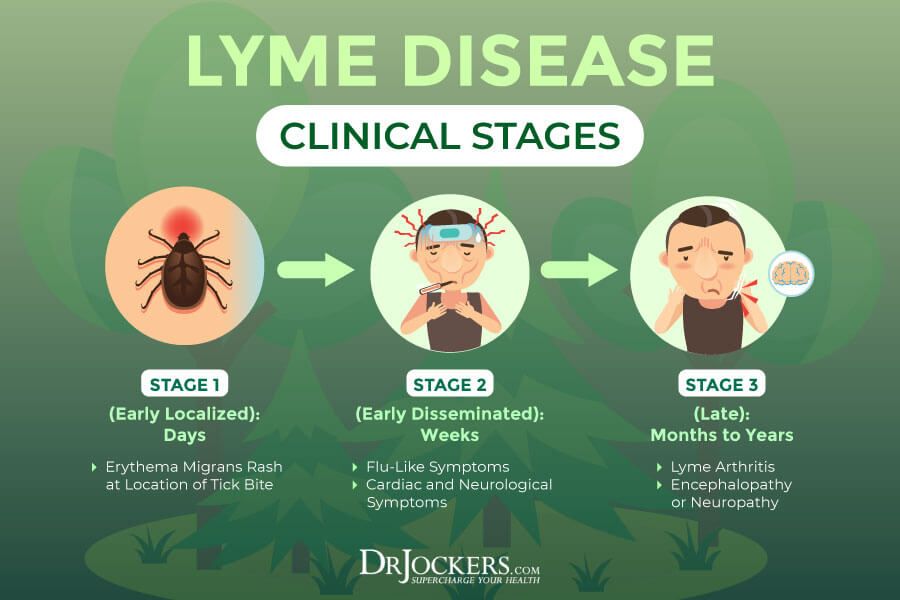 This period can take up to two months – the characteristics of the human blood-brain barrier determine the rate of spread of pathogenic viruses or bacteria and the appearance of characteristic symptoms.
This period can take up to two months – the characteristics of the human blood-brain barrier determine the rate of spread of pathogenic viruses or bacteria and the appearance of characteristic symptoms.
The consequences of a tick bite and signs of infection vary depending on the form of the disease and the reaction of the body, but most often appear:
- characteristic swelling and bright redness at the site of contact with the tick;
- fever;
- chills;
- general deterioration of health;
- lethargy, drowsiness;
- fatigue;
- attacks of nausea;
- photophobia – an unpleasant reaction to bright daylight or artificial light;
- various rashes in the form of spots, nodules, pustules;
- shortness of breath – shortness of breath with mild exertion;
- sensation of difficulty in moving and aching in the joints;
- mood changes, emotional instability;
- increased anxiety;
- possible changes in the perception of reality in the form of hallucinations.

Initially, the symptoms of a tick bite may be mild, the skin may look without visual changes, and the signs increase later. A vivid clinical picture is typical for children, elderly patients, as well as people with chronic diseases that adversely affect immune function.
Ordinary people may not feel the signs of a tick bite at first – neuroinfections that are carried by ticks develop rather slowly. Often the progression of the disease is accompanied by fever, increased heart rate, inflammation of the lymph nodes, skin rash, itching in the place where the tick bit.
Also, often an arthropod bite causes a relatively harmless allergic reaction that has nothing to do with a serious endemic disease. It is important to consult a doctor for differential diagnosis of conditions. An allergy to a tick bite is accompanied by a bright local reaction on the skin, nasal congestion, tearing, and redness of the eyes.
Tick-borne encephalitis has a number of characteristic symptoms that are dangerous to health and even life. The onset of the disease may resemble the flu – fever, chills, aching joints and muscles appear. Deterioration of the cardiovascular system leads to interruptions in the work of the heart, arrhythmia, shortness of breath. Often patients complain of changes in the functioning of the gastrointestinal tract – nausea and vomiting, lack of appetite, loosening of the stool.
The onset of the disease may resemble the flu – fever, chills, aching joints and muscles appear. Deterioration of the cardiovascular system leads to interruptions in the work of the heart, arrhythmia, shortness of breath. Often patients complain of changes in the functioning of the gastrointestinal tract – nausea and vomiting, lack of appetite, loosening of the stool.
Neurological complaints may begin – episodes of changes in consciousness up to epileptic seizures. Despite the fact that different microorganisms become the causative agents of diseases, the alarming symptoms in pathologies are similar.
Consequences of non-intervention
The lack of a timely response to a tick bite can lead to the progression of the disease – a neuroinfection develops, which often leads to paralysis, meningitis, deadly complications and disabling consequences. It is important to know how dangerous a tick bite is for a person in order to respond to the problem in time.
Do-it-yourself tick removal
It is necessary to follow all the principles of the removal technique – it is necessary to remove the arthropod completely in a living state in order to maintain the possibility of diagnosing for the presence of the virus.
The classic version involves the use of tweezers as the main tool for extracting the arthropod parasite. A full-fledged reliable girth of the body prevents the main complication of manipulation – the preservation of the head of the tick in the thickness of the human skin. You should rotate his body clockwise around the axis – this avoids sudden movements in order to safely remove the whole tick. There is also a method using sewing thread – the knot is attached to the tick, and twisting is done by rotating the thread.
Contrary to popular belief, the use of oily solutions only complicates the procedure, while making it impossible to analyze the parasite for pathogenic viruses or bacteria.
If, after an attempted removal, a trace remains on the skin in the form of a dark dot, this may indicate that the arthropod’s head was not removed. You should wipe the bite site with alcohol, and then remove the remnants of the parasite.
You can also use iodine or another effective antiseptic to treat the skin.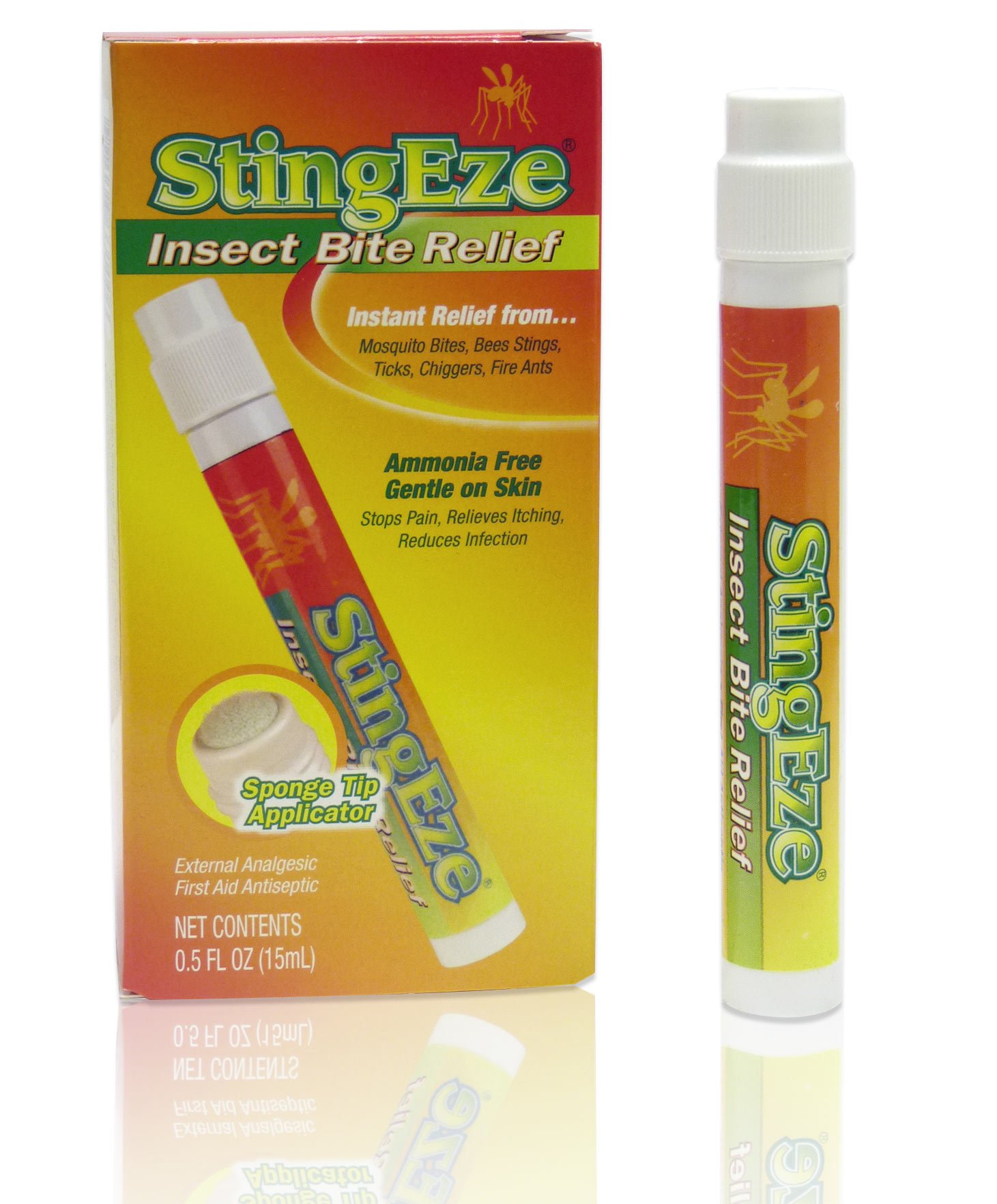 After completing the manipulations, the removed tick must be stored in a glass container with a cotton pad moistened with water. Preservation of the parasite will determine the danger of ticks to humans in the area.
After completing the manipulations, the removed tick must be stored in a glass container with a cotton pad moistened with water. Preservation of the parasite will determine the danger of ticks to humans in the area.
However, it is better to entrust this task to specialists – experienced medical workers know how to quickly and correctly get rid of a tick, then they immediately deliver the material for research to the laboratory.
Non-specific prevention of tick bites
Preventive measures must be taken when traveling to endemic zones and disadvantaged forest-steppe regions with a high risk of infection from the parasite.
The main points to reduce the likelihood of tick bites:
- vaccination before traveling to forest-steppe zones;
- maximum coverage of all parts of the body with clothing, headgear, closed shoes;
- avoiding passing under trees and thick bushes;
- thorough examination of all family members for bites, including the scalp;
- treatment with special external agents that repel insects.

Vaccination against tick-borne encephalitis in the Paracelsus clinic
Doctors of the Paracelsus multidisciplinary medical clinic recommend that all people at risk be vaccinated against tick-borne encephalitis – people who live in endemic areas or are going to come to such areas are vaccinated. The Ministry of Health of Russia has determined the list of vaccines that are allowed for vaccination, some of them are produced by domestic companies, and several items are supplied from other countries.
The scheme of application of the vaccine:
- consultation with a general practitioner and determination of the safety of vaccination;
- the first stage of the introduction of the vaccine on a certain day;
- revaccination – after 1-2 months according to the scheme;
- the third vaccination – 12 months after the second stage of the drug administration.
Vaccination can provide a reliable protective effect to prevent infection of the nervous system and the development of complications, so this method of prevention is necessary for everyone who is more susceptible to infection by ticks.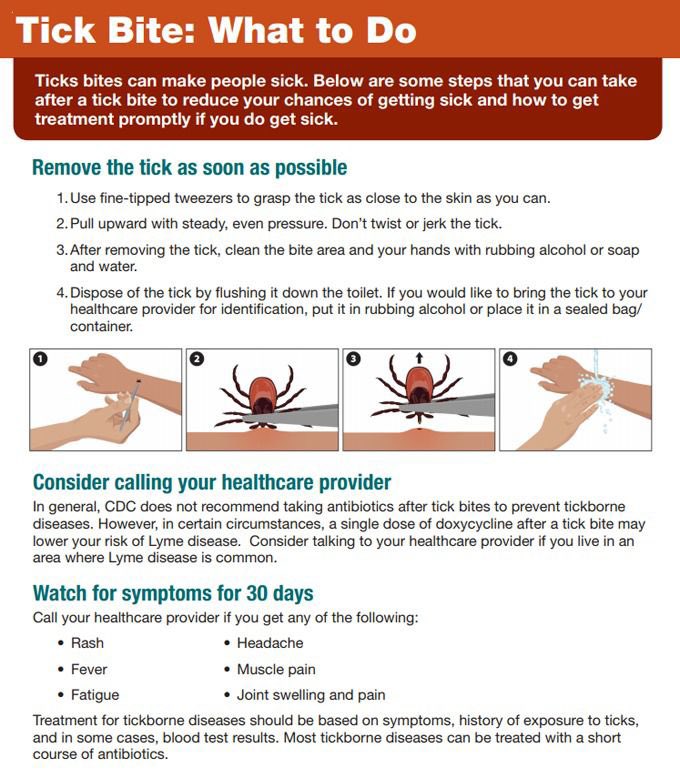
Paracelsus offers vaccination with the domestic vaccine EnceVir, which is effective against common strains of the virus that ticks carry. The Paracelsus team cares about the health of its clients, therefore, before the vaccination, everyone needs to undergo an examination by a therapist and some additional diagnostic methods to assess their general health, possible contraindications and the risk of developing complications of the vaccination.
Treatment at the Paracelsus Center
Timely access to a doctor is the key to preventing severe damage to the nervous system and internal organs, preventing serious complications and minimizing the risk of death.
Only in the conditions of a medical institution can all conditions be provided for the rapid and safe extraction of parasites with subsequent analysis of the tick, as well as a comprehensive diagnosis of the victim for the transmission of infections.
Paracelsus Medical Center is a complex clinic, which is attended by specialists from various fields of medicine.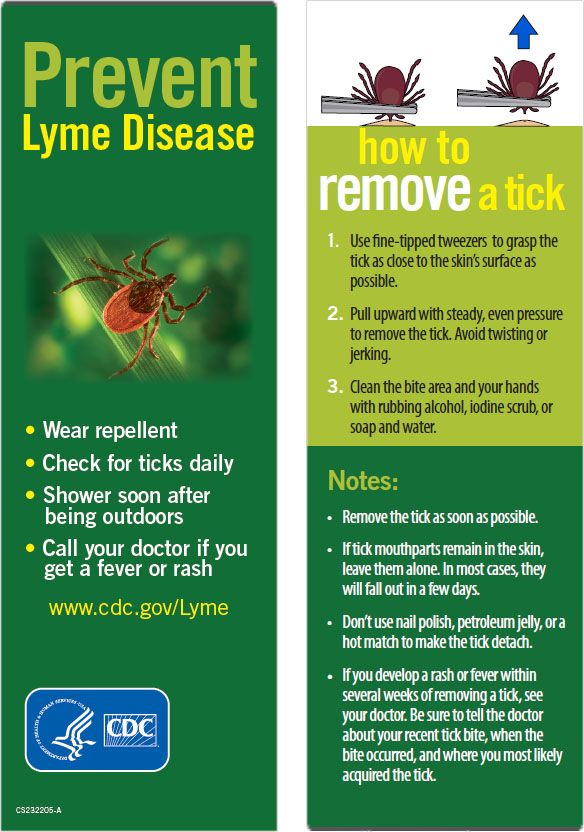 Infectionists and parasitologists of our institution know how to properly remove a tick, as well as treat the bite site. The study of a tick in order to determine the carriage of pathogens of neuroinfections is necessary to understand the further tactics of managing a victim of a bite, since changes that are noticeable during diagnosis may not yet develop in his body.
Infectionists and parasitologists of our institution know how to properly remove a tick, as well as treat the bite site. The study of a tick in order to determine the carriage of pathogens of neuroinfections is necessary to understand the further tactics of managing a victim of a bite, since changes that are noticeable during diagnosis may not yet develop in his body.
Further penetration of microorganisms into the human bloodstream causes the formation of specific antibodies that can be detected by laboratory blood tests.
Even if a long period has passed after the moment of the bite, and complaints have appeared recently, it is better to consult a doctor to exclude dangerous diagnoses and take the appropriate tests.
Also, a tick bite can cause allergic reactions, become inflamed and complicated by local infectious processes. In all such cases, a doctor’s examination is necessary with the further appointment of appropriate treatment. The use of antihistamines and local ointments quickly returns the quality of life.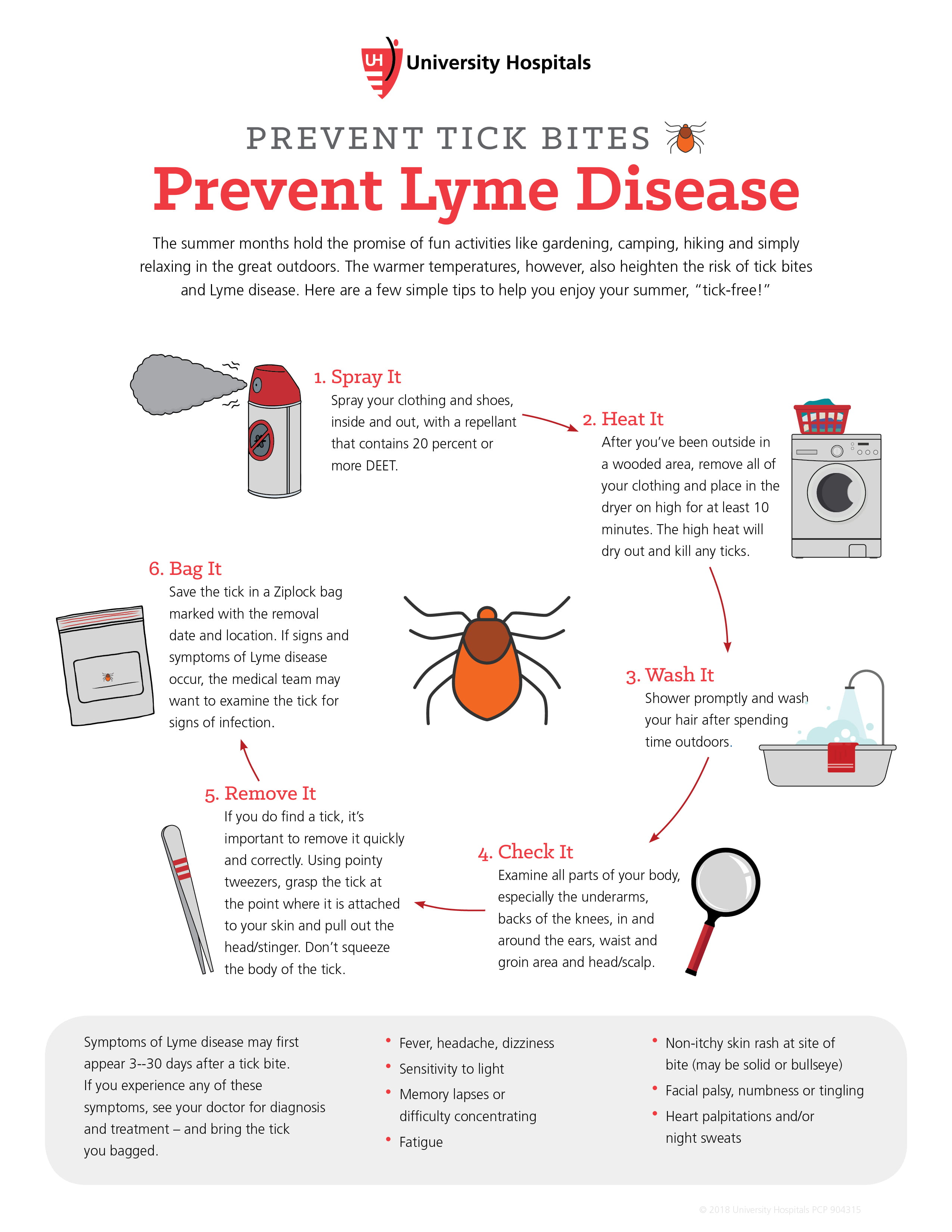


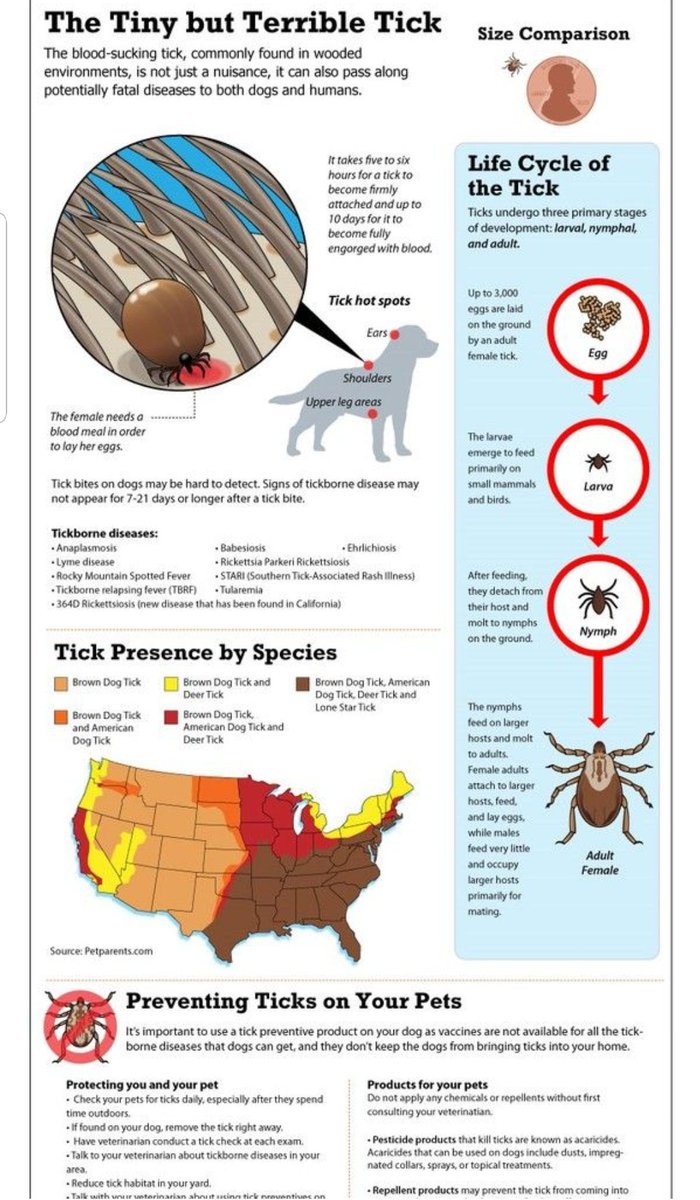 You or your doctor may be able to make connections between them.
You or your doctor may be able to make connections between them.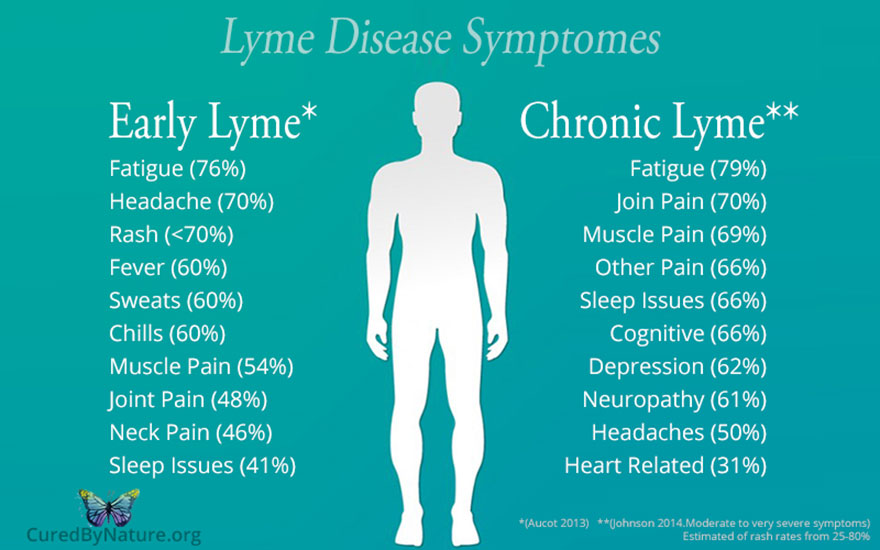 Symptoms include fever, headache and a rash. If not treated early with the right antibiotic, this tick disease can be deadly.
Symptoms include fever, headache and a rash. If not treated early with the right antibiotic, this tick disease can be deadly.